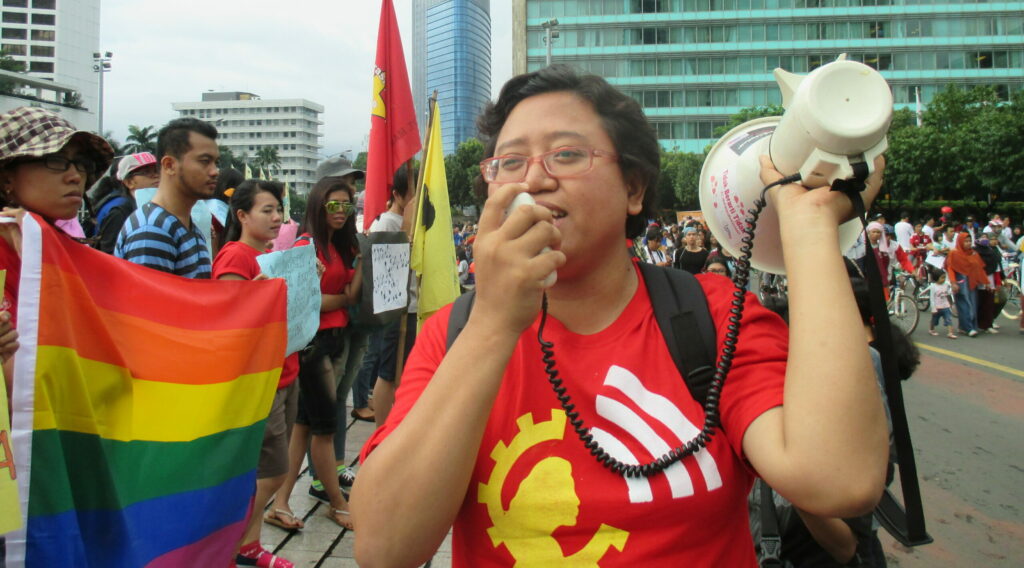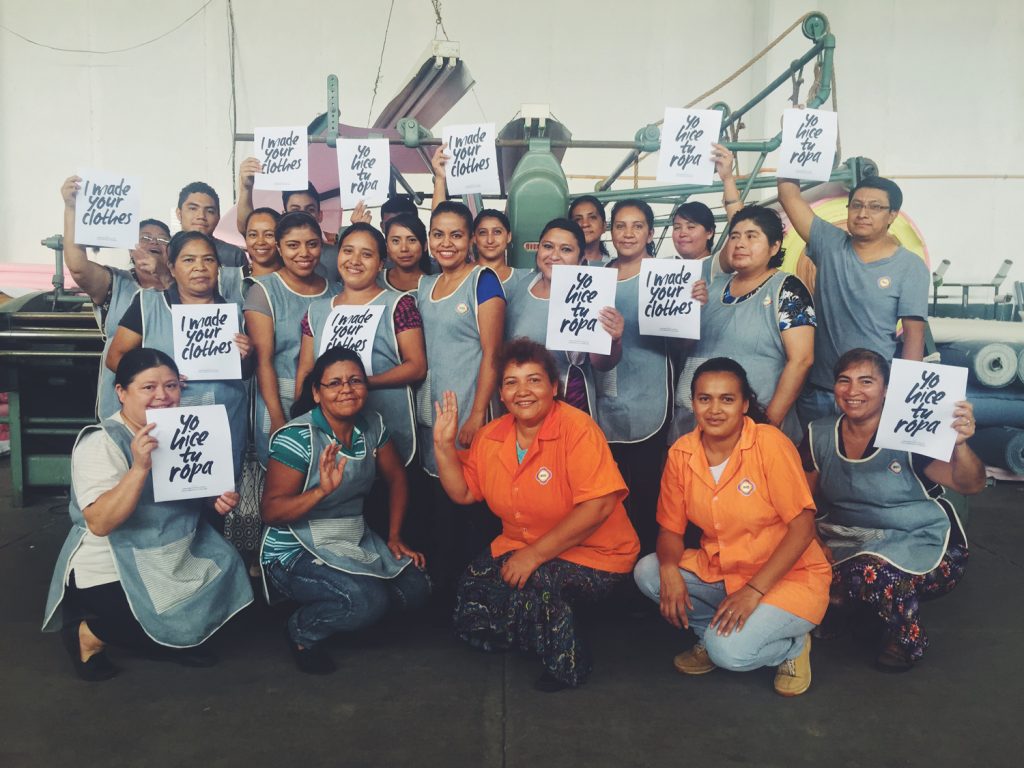The best sustainable and ethical menswear brands to add to your wardrobe
Hey there, you look cute today. Yeah you do.
But here’s a question for you: do you know where your clothes come from? Who made that outfit you’re wearing? What are their working conditions, their salary? It’s all too easy to buy clothes – but do you know the facts?
What is fast fashion?
First off, what actually is ‘fast fashion’?
It’s a term used by the industry to refer to the cheap, trendy clothing that takes ideas from the catwalk and celebrity culture and rolls them out to the high street at ridiculously fast speeds.
“If you want to know where the phrase ‘Fast Fashion’ comes from, it’s Zara. It was coined by The New York Times in 1989, and was written in response to Zara boasting that it took them “15 days between a new idea and getting it into the stores”.” Tiffany Darke
When such speed and scale is involved, this kind of manufacturing comes at a price – and, given the low prices on the high street, it’s not a price that’s borne by us, the fashionistas. Instead, that cost is paid by the workers making our clothing. And the price is a lot higher than you might suspect.
Want to know more about the nitty gritty of the fast fashion industry? Here are some of the facts. We’ve tried to make sure it’s not all bad, but, well – it mostly is.
Fast Fashion: The Facts
FAST FASHION: THE (ALMOST) GOOD
The sales share of sustainable clothing steadily rose to 4% in 2022, and the trend is forecast to continue, with the sales share set to reach over 6% by 2026. (Check out our fashion pages for some of our faves).
While the growth of sustainable fashion is to be celebrated, the absolute number of sustainable fashion products remains very low – even by 2026 unsustainable fashion will still account for around 94% of the overall market.
Plus, global clothes sales could increase by up to 65% by 2030, the World Bank suggests. This means even though we’re buying more sustainable products, we’re buying many more unsustainable ones. It doesn’t quite add up, does it?
The profits do, though.
The value of the fast fashion market worldwide from 2021 was estimated to be worth over $91 billion. This is expected to reach $133 billion by 2026.

FAST FASHION, FAST FACTS: PEOPLE
Every April marks the anniversary of the Rana Plaza disaster. More than 1,130 people were killed when a factory complex collapsed in Dhaka, Bangladesh on 24 April 2013. Another 2,500 people were injured. The people crushed under those eight floors were working for familiar fashion brands – and it was a wake up call to many of the fashion forward about the true cost of our clothing. Yet it was not enough of a wake up call, because not enough has changed.
The Ellen MacArthur Foundation estimates that 300 million people work in the clothing industry, most of them women. Gender-based violence is a huge concern.
Asia accounts for roughly 60% of global garment exports. The global justice organisation’s 2019 survey of 200 garment factory workers, including 181 women, in Bangladesh’s capital Dhaka, found that 80% said they had experienced or witnessed sexual harassment and abuse at work. Ten per cent of women surveyed said they were currently being subjected to sexual harassment, molestation and assault in the workplace.
Even in that small sample, that’s a staggering number – and shows that by making the right choices and pushing for change, we have the chance to improve lives for so many.
77% of companies believe there’s a likelihood of modern slavery in their supply chain.

Last year we interviewed Dian along with four other union leaders from India, Pakistan, Sri Lanka and Cambodia, who are fighting for women garment workers’ rights. Read our full article, here.
FAST FASHION, FAST FACTS: WAGES
It is estimated that less than 2% of the people who make the clothes on our bodies earn a living wage (The True Cost film).
Even buying clothes made in Britain doesn’t guarantee fair wages, with reports of garment workers being paid as little as £3 an hour – less than half the minimum wage workers aged 25 and over are legally entitled to.
More than half of the Leicester garment workers involved in a 2022 study say they are paid below the minimum wage and receive no holiday pay, almost two years on from revelations about poor standards in the city’s factories.
Globally, the situation is just as dire. Undercover filming in China reveals that fast-fashion workers were paid just 3p per garment, sewing for up to 18-hour days for fast-fashion brand Shein.
Typical earnings in the industry range from 50 cents an hour in Bangladesh, to $1.00 to $1.50 an hour in higher wage countries like El Salvador and Indonesia, reports the Workers Rights Consortium (WRC).
Women get the short straw when it comes to wages, earning on average approximately 18% less than men, according to one study across nine countries in Asia.
The lure of lower wages is ever-tempting for brands, too. Ethiopia became the industry’s new hotspot in 2019, according to ‘Made in Ethiopia: Challenges in the Garment Industry’s New Frontier’.
Dorothée Baumann-Pauly, from NYU Stern’s Centre for Business and Human Rights, reported how the Ethiopian government was attempting to attract the fashion industry to its up-and-coming garment production hub, which employs 25,000 workers at an industrial park 140 miles south of Addis Ababa. The basic wage of £20 a month is one of the biggest promises made to Asian suppliers and western buyers, despite this being 40 per cent less than the average income and barely enough to get by.
FAST FASHION, FAST FACTS: WAGE THEFT DURING THE COVID PANDEMIC
At the start of the COVID-19 pandemic $3 billion worth of garments were paused or cancelled by the biggest fashion producers. Rather than paying for what they’ve already ordered, the brands put it on garment factories to pay the cost, affecting millions of workers. And that’s just scratching the surface – we reported on coronavirus and the fashion industry, here.
It’s been nearly three years since the pandemic. The Asia Floor Wage Alliance reports that millions of Asian garment workers — a majority of whom are women — have still not been paid the wages that they were owed by brands such as Nike, Levi’s and VF Corp.
Yet, these companies continue to report record revenue growth and profits, making their highest profits in over a decade as of 2021 — with their investors acquiring tremendous wealth through stock buybacks. The Nike-owning Knight family (the 24th wealthiest family in the world) reportedly paid themselves $74 million in dividends.
The struggle to get the money back is ongoing. More than 20 garment worker unions from Bangladesh, Cambodia, India, Indonesia, Pakistan and Sri Lanka have come together to release a report on this.

FAST FASHION, FAST FACTS: THE ENVIRONMENT
Despite all the pledges of reductions from fashion brands, a 2022 Fashion Supply Chain Emissions Report shows that the fashion industry has actually increased its emissions since committing itself to carbon reductions the previous year.
According to the 2017 Pulse of the Fashion Industry report, if demographic and lifestyle patterns continue as they are now, our global consumption of clothes and shoes will rise from 62 million metric tons in 2019 to 102 million tons in ten years — equivalent to more than 500 billion additional T-shirts.
We don’t wear them. We don’t even recycle them.
Despite all the talk of a ‘circular economy’, less than 1% of used clothing is recycled into new garments.
An unimaginable 11 million items of clothing end up in landfill or are incinerated each week – that’s the equivalent of one truckload every second.
When asked the question, the majority of us say that we care.
For example, in a Mckinsey study, 67% of consumers reported that they now pay attention to the environmental impacts of their clothing.
However, the sheer fact that the production, sales and carbon numbers are all still going up rather than down clearly shows our behaviour fails to align with our intentions.
Main Image: Fashion Revolution

